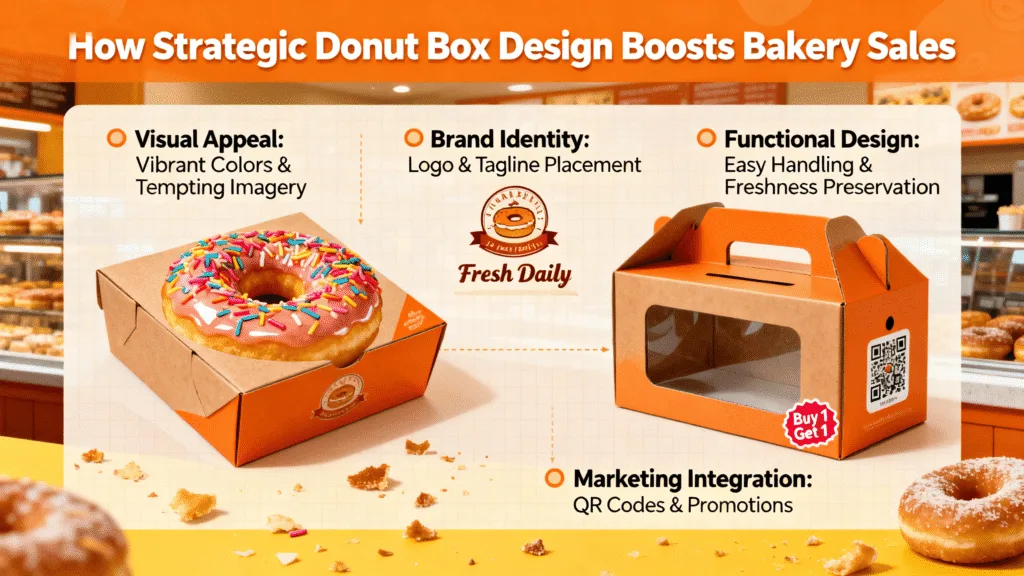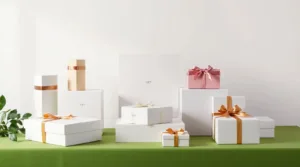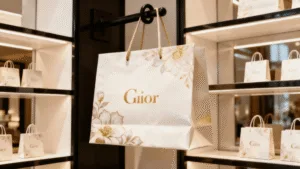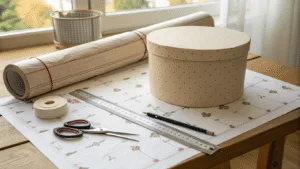Your donuts are artisanal masterpieces, but they’re leaving your shop in a plain, generic box. This flimsy packaging fails to protect your creations, hides their beauty, and does nothing to build your brand.
A well-designed donut box with strategic windows, secure inserts, and strong branding acts as a mini-billboard. It protects the product, drives impulse buys through visual appeal, and transforms a simple purchase into a shareable, memorable brand experience.
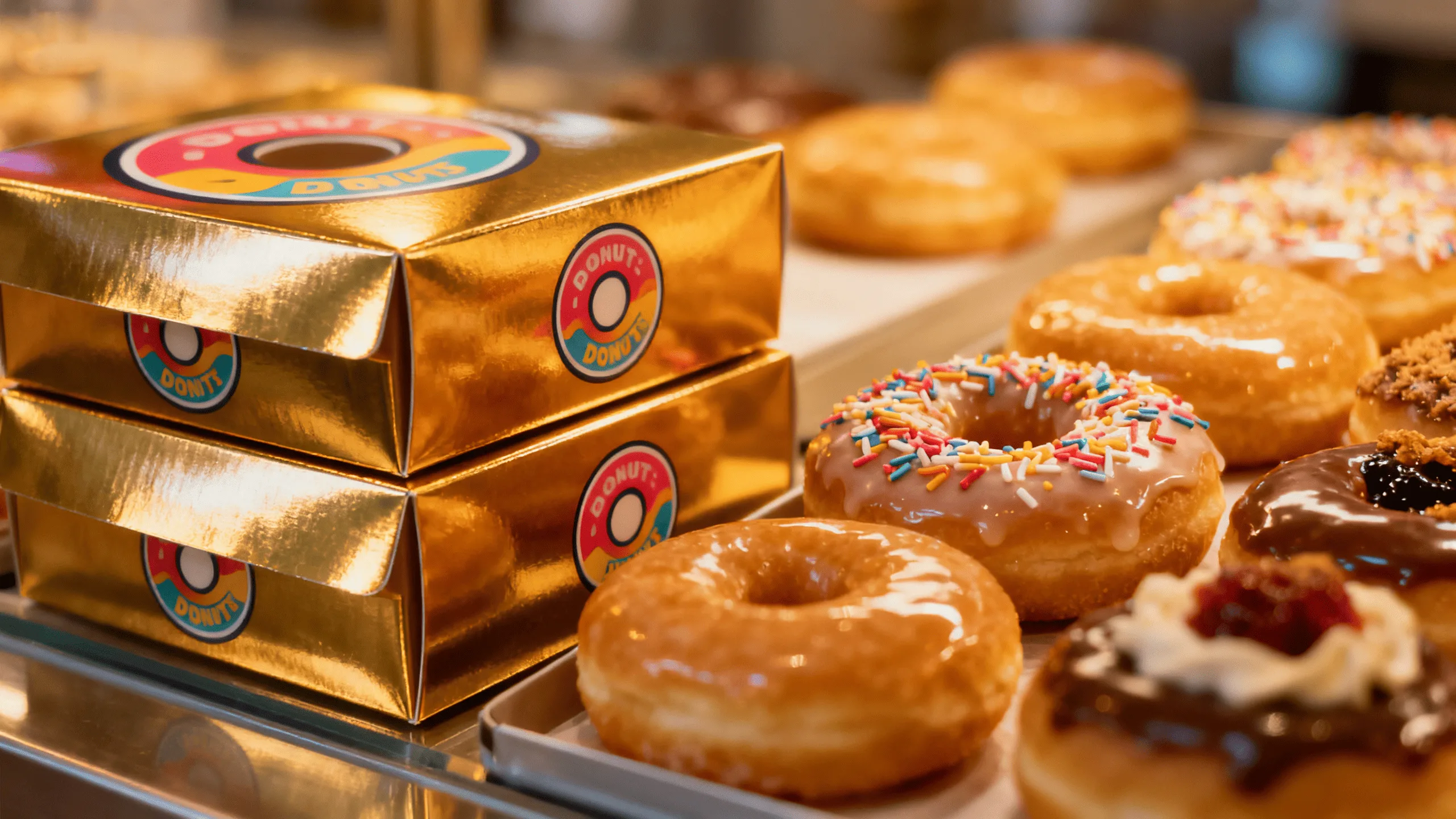
I remember working with a small, family-owned bakery a few years ago. Their donuts were incredible, consistently winning local awards. But they used the same plain white stock boxes as every other shop in town. Customers loved the product, but the brand had no presence outside the store. We started with a simple change: we added a large cellophane window to the top of the box and printed their charming logo on the side. The impact was immediate. Not only did in-store sales increase from customers seeing the donuts through the packaging, but they started seeing their branded boxes all over town and tagged in social media posts. The box stopped being a disposable container and became their most effective marketing tool.
How Do Window Styles on Donut Boxes Increase Impulse Purchases?
Your most colorful and enticing donuts are hidden inside a closed cardboard box. Customers on the fence have no visual trigger to tempt them into a purchase, and potential sales are lost.
A window provides a direct preview of the product, triggering appetite appeal and building trust. This visual tease encourages impulse buys by showcasing the quality and freshness of your donuts before the box is even opened.

The principle here is simple: we eat with our eyes first. A study from the Journal of Retailing confirms that product visibility significantly increases unplanned purchases. A window on a donut box leverages this psychological trigger. It removes the barrier between the customer and the product, allowing the vibrant colors of the sprinkles, the glossy shine of the glaze, and the fluffy texture of the dough to do the selling for you. It builds immediate trust; there are no surprises, and the customer can see the high quality they are about to purchase. I’ve found that the shape and size of the window also tell a story. A large, full-panel window screams confidence and transparency, ideal for a dozen assorted donuts. A smaller, custom-shaped window—perhaps in the shape of a donut itself—can add a playful, branded touch that enhances the customer experience and makes the packaging more memorable.
The Power of the Preview
A window acts as a sneak peek, creating a sense of anticipation and desire. It allows your product to be its own best advertisement, even after it has been packaged and is sitting on the counter waiting for purchase.
Choosing Your Window Style1
The right window depends on your product and brand identity. Consider what you want to highlight. Is it the variety of a full dozen or the special decoration on a single, gourmet donut?
| Window Style | Visual Impact | Branding Opportunity | Best For… |
|---|---|---|---|
| Full Top Window | Maximum visibility | Moderate (branding on sides) | Assorted dozens, showcasing variety |
| Partial Window | Focused preview | High (ample space for top printing) | Highlighting specific donuts, 2-packs/4-packs |
| Custom Shape2 | High, memorable | Excellent (window becomes part of the logo/design) | Signature items, creating a unique brand identity |
Why Are Custom Inserts Crucial for Premium Donut Presentation?
Your customer opens their box of beautifully decorated donuts, only to find them smudged, tilted, and stuck together. The premium experience you crafted is ruined in transit, leading to disappointment and negative reviews.
Custom inserts are essential for preventing movement, protecting delicate toppings, and ensuring each donut arrives in perfect, picture-ready condition. They elevate the unboxing experience, reinforcing the premium quality of your products and justifying a higher price point.
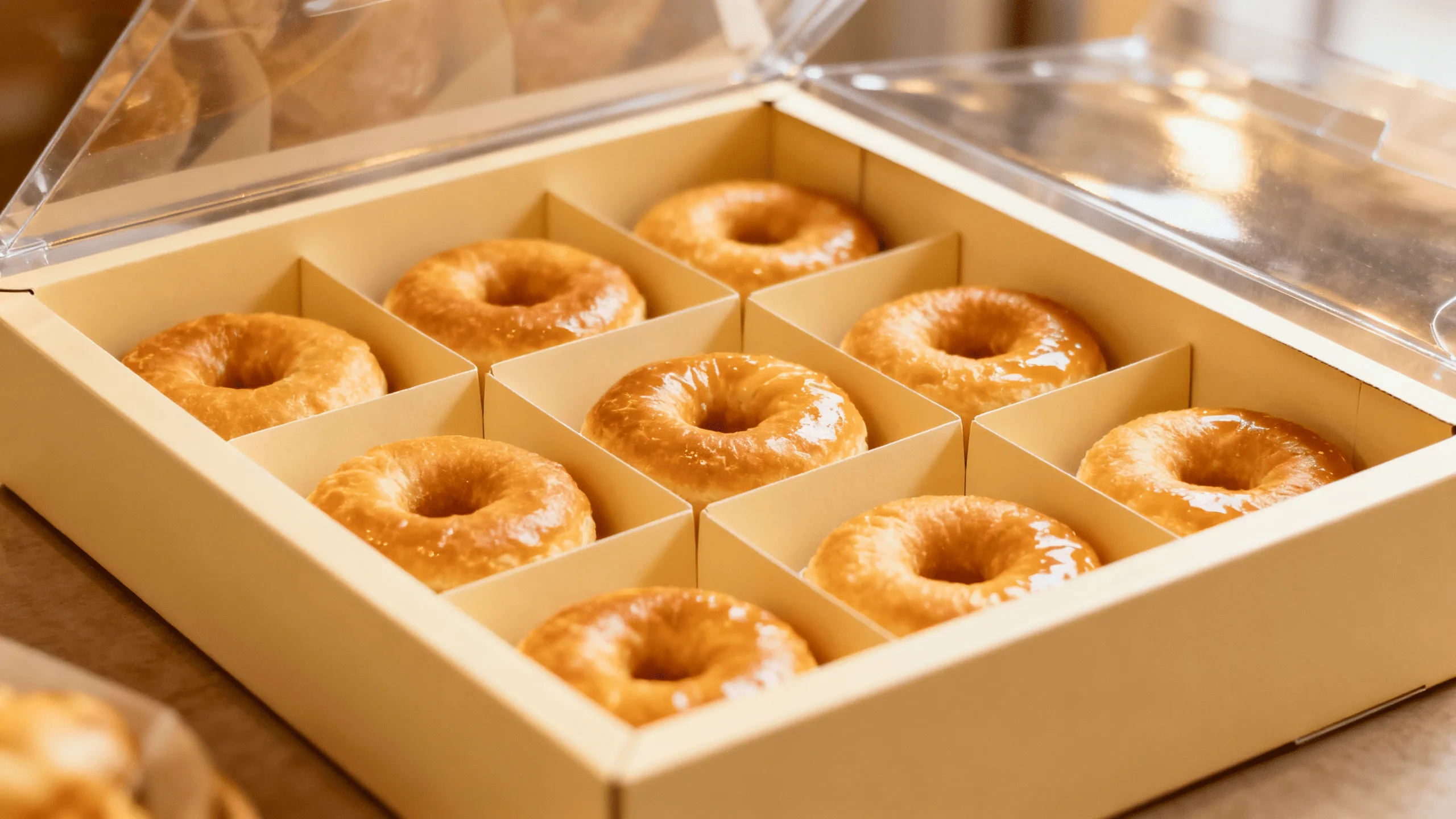
For any bakery selling gourmet or elaborately decorated donuts, inserts are not a luxury; they are a necessity. They are the structural element that guarantees your hard work in the kitchen is not undone the moment the customer walks out the door. The function is twofold: protection and presentation. Inserts create individual compartments that stop donuts from sliding into each other, preserving delicate icings, sprinkles, and toppings. This is especially critical for delivery and takeaway orders. But beyond protection, inserts create a clean, organized, and high-end presentation. When a customer opens a box and sees each donut perfectly framed in its own space, it communicates a level of care and professionalism that generic, loose-packed boxes cannot match. I often recommend simple, die-cut inserts made from the same paperboard as the box for a cohesive look. For an ultra-premium or eco-conscious brand, custom-molded paper pulp inserts can create a truly unique and sustainable unboxing experience.
Protection Meets Presentation
A good insert doesn’t just hold the donuts; it presents them. It ensures the first look inside the box is as delightful as the first bite. This attention to detail is what separates a standard bakery from a premium confectionery brand1.
Material and Design Considerations
Inserts should be designed for your specific donut sizes. They can be simple dividers or custom-cut holders. The material should be food-grade and sturdy2 enough to handle the weight of the products. Kraft paperboard offers a rustic, natural feel, while white SBS board provides a clean, premium canvas.
How Does Your Box Design Maximize Retail Display and Brand Impact?
Your donut boxes are hidden in a pile behind the counter, or when they are stacked, your brand name is completely invisible. They are difficult for staff to assemble during a rush, slowing down service and frustrating customers.
Your donut box is a branding tool that must function effectively in a retail setting. Stackable designs, clear logos visible from multiple angles, and a cohesive brand aesthetic ensure your product stands out, encourages grab-and-go purchases, and creates a professional, organized display.
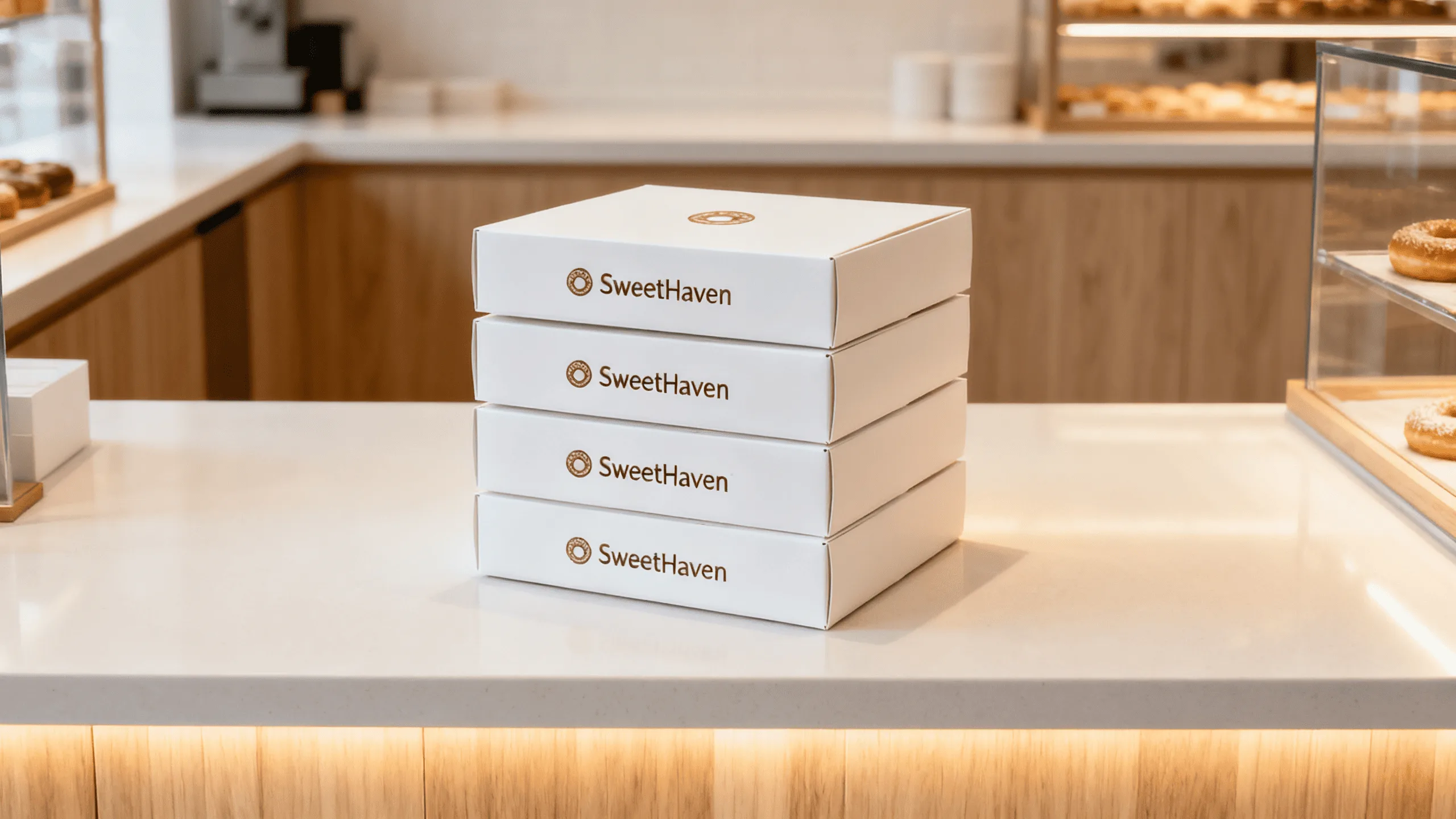
A donut box must be designed for its entire lifecycle, and a huge part of that is its time in your store. I always ask clients: "Where will these boxes live before they are sold?" The answer determines the design. If they will be stacked on a counter, the side panels become the most valuable marketing real estate. Your logo, website, and social media handles should be printed there, turning a simple stack of boxes into a silent, effective advertisement. The structure matters, too. An "auto-lock bottom" box can be assembled in seconds, a crucial feature for handling the morning rush efficiently. A simple, flat-folding design saves precious back-of-house storage space. The visual identity—your colors, fonts, and logo—should be consistent with your in-store branding to create a seamless customer experience. This transforms the box from a mere container into an integral piece of your brand’s physical presence. It’s the final brand touchpoint in the store and the first one when they get home.
Designing for the Shelf
Think of your stacked boxes as a single, large canvas. How can the design on one box interact with the next? A clever pattern or a logo that is partially visible can create intrigue and a powerful visual block that draws the eye.
The Unboxing as Marketing
In the age of Instagram, the "unboxing experience" is a powerful form of user-generated marketing1. A beautifully designed, easy-to-open box encourages customers to share photos and videos, providing you with free advertising and social proof. A simple, elegant box is far more likely to be shared than a generic one.
Conclusion
Your donut box is far more than a simple container; it is a critical sales tool, a brand ambassador, and an essential part of your customer’s experience. By making strategic choices in window styles, protective inserts, and display-friendly design, you directly contribute to increased sales and a stronger, more memorable brand.
Ready to create donut boxes that sell as well as your donuts do? Explore our custom food packaging options or contact my team today for a personalized quote.
FAQ
What are the most eco-friendly options for donut boxes?
The most sustainable choices include boxes made from recycled Kraft paperboard, which is both recyclable and compostable. For the window, opt for PLA (a plant-based plastic) instead of traditional petroleum-based PET. Using soy-based inks for printing also minimizes environmental impact.
What is the difference between Kraft paper and SBS/whiteboard?
Kraft paper has a natural, brown, rustic look and is great for eco-conscious or artisanal branding. Solid Bleached Sulfate (SBS), or white paperboard, provides a clean, smooth, white surface that is ideal for vibrant, full-color printing and communicates a more modern or premium feel.
How can I make my donut boxes more "Instagrammable"?
Focus on a clean, bold design with a clear logo. Use unique structural elements or a custom-shaped window. Consider adding a fun, branded message on the inside of the lid for a surprise-and-delight moment when the customer opens the box. A beautiful design that photographs well is more likely to be shared.

